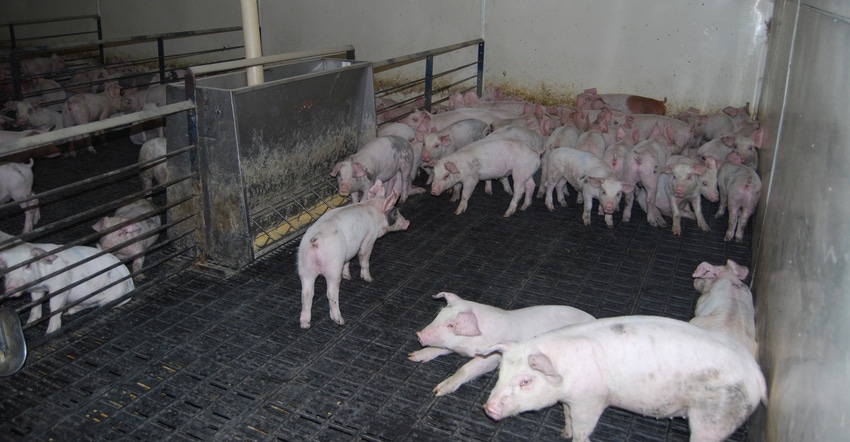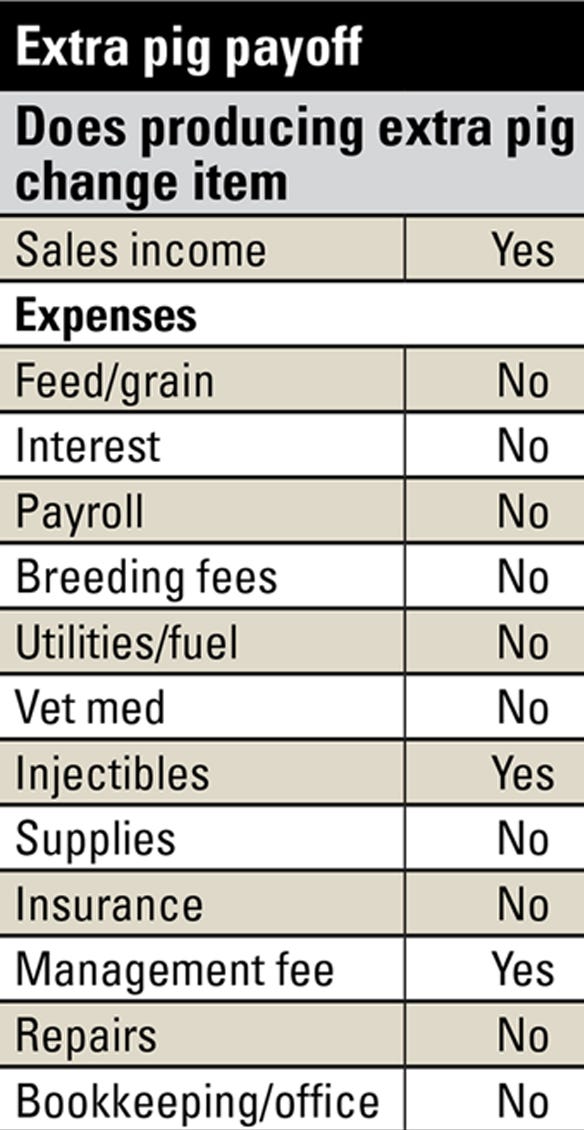July 19, 2017

By John Otte and Paul Quam
The prolific sow is the most effective profit booster in a sow unit. Want proof? Go through every line in your profit-and-loss statement. Ask “Will that line change if I get one more pig per sow this year?”
The answers:
• Sales will rise by the value of the extra pig.
• Feed cost won't change because most of it goes to the sow.
You'll have lines for interest, payroll, breeding fees, utilities and fuel, office and bookkeeping, insurance, supplies, repairs, freight, and trucking. Those costs will not change if you produce one more pig per sow.
Herd health injectable cost will rise because you treat the extra pig. Some sow units have a per pig management fee. That would also climb.
Bottom-line for producing an extra pig
Selling an extra pig per sow boosts gross sales revenue by the value of the pig. Most expenses will not change. Those that do change will hike total cost by a mere fraction of the value of the extra pig. Therefore, almost all of the value of the extra pig will flow directly to the bottom line of the profit-and-loss statement as profit.
Iso-wean feeder pigs can be worth nothing to $90 per head. The value is driven mostly by expected butcher hog prices five months out and the supply of pigs. Suppose iso-wean pigs are worth $35 per head. Also, suppose extra direct costs run $3 per head. On 1,200 litters per year, an extra pig per litter flows $32 per pig, or $38,400 to the bottom line.
From another angle, getting an extra pig per sow per year spreads the fixed costs of the breeding herd and facilities over more pigs. That cuts per pig cost. More dollars flow to the bottom line making more dollars available to pay principal or lower the breakeven on all pigs.
How to get that extra pig per litter
Many small things contribute. Some of them are:
• sanitation
• disease control
• herd health
• optimal nutrition
• optimal ventilation
• temperature control
• dust control
• optimal genetics
• optimal AI technique
• worker attitude
• culling and replacement strategies
• corn quality
• minimizing of nonproductive sow days
All of these little things, and others, compound to position top-profit sow units to get that extra pig.

Production, financial issues linked
A majority of the time, when sow unit managers face financial problems, they have production problems. The two biggest causes of financial problems are:
• Revenue falls short, which is directly linked to fewer than planned pigs out the door.
• An individual line item in costs gets out of line.
Sometimes reasons are obvious. Suppose a winter month runs 15 degrees colder than normal. Heating costs skyrocket. Performance can suffer.
Alternatively, suppose you get porcine reproductive and respiratory syndrome (PRRS). Pigs out the door will drop. Vet expenses to treat the disease will climb. Again, finances get squeezed.
Sometimes the revenue shortfall links to too few pigs out the door for no obvious reason. That's when you need to focus on the plethora of small things to improve overall management and boost pigs out the door. Solving the production problems will almost always solve the financial problems.
Otte is the former economics editor for Farm Progress Publications. Quam is a farm financial consultant based in Jefferson.
You May Also Like




